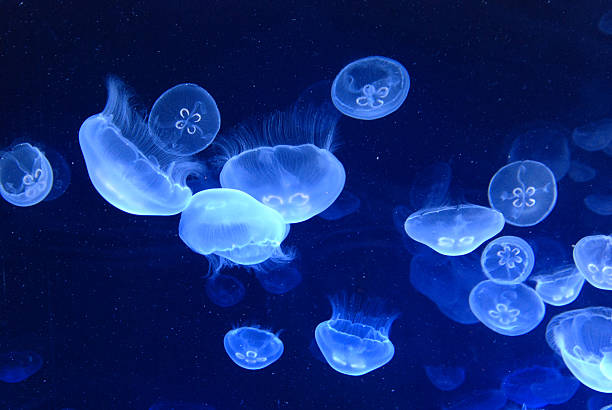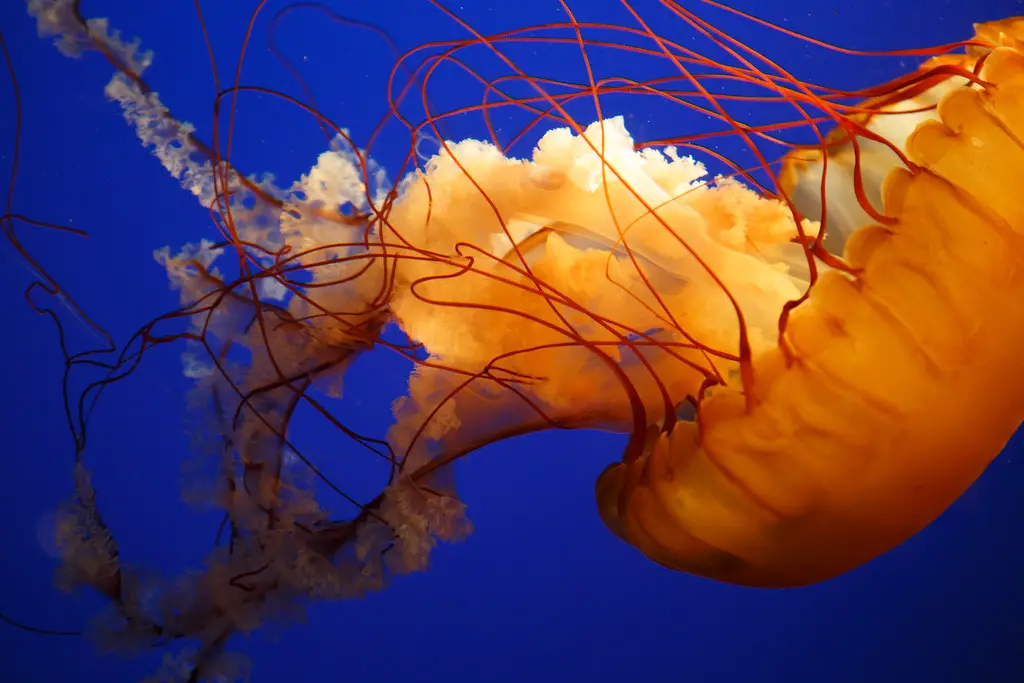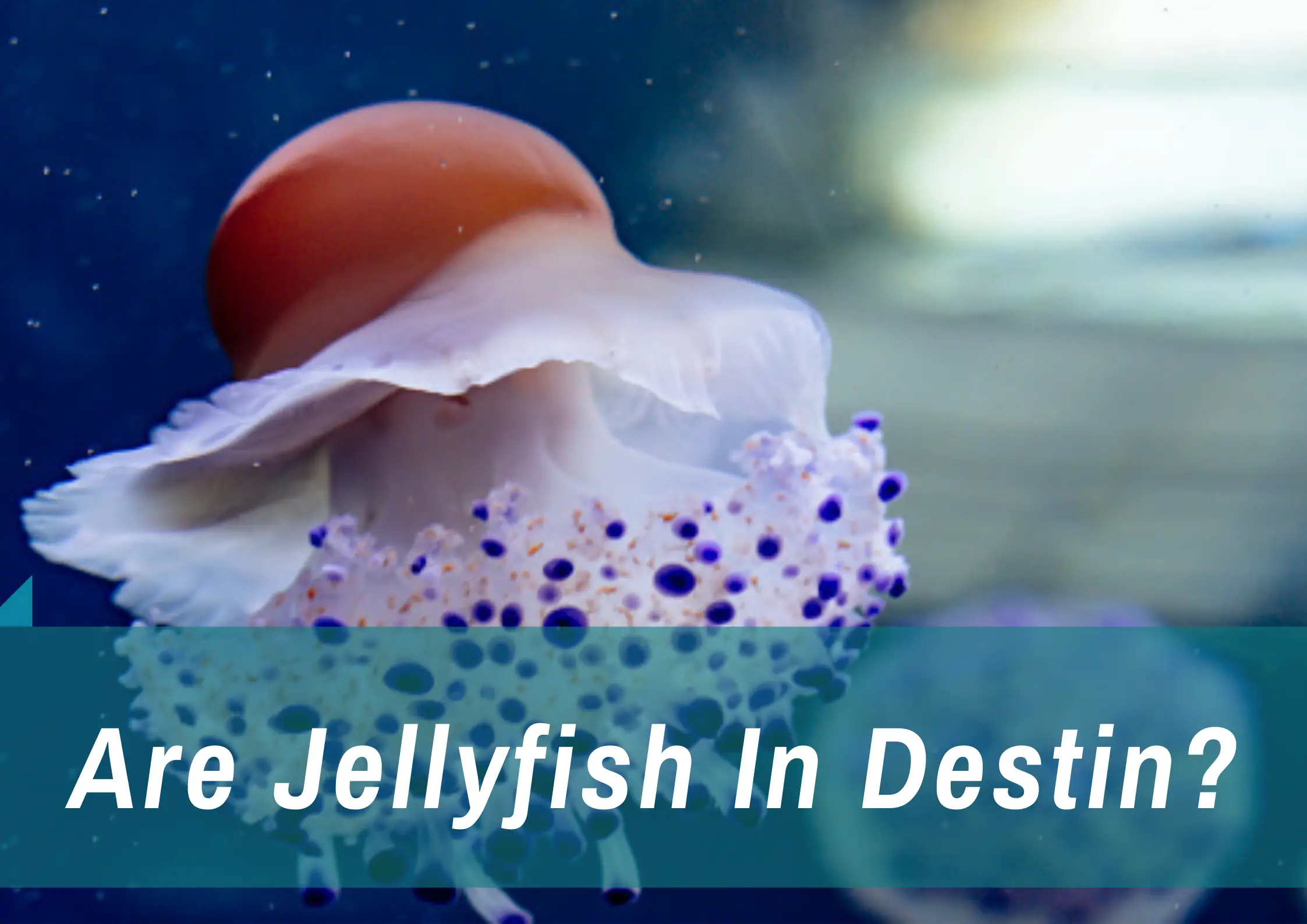With its beautiful emerald green waters and white sandy beaches, Destin is a popular beach destination located in the Florida Panhandle along the Gulf of Mexico.
As with any ocean beach, occasional jellyfish sightings are to be expected. But just how common are jellies in Destin?
In this article, we’ll take a closer look at what types of jellyfish can be found along Destin beaches, which species are most prevalent, when they are most active, the sting potential, and how to identify and avoid them. We’ll also overview general jellyfish biology and life cycles.
While the sight of jellyfish gracefully pulsing through the water is mesmerizing, it’s helpful to understand the marine science behind which ones carry a sting risk worth watching out for in Destin.
Let’s delve into when, where, and how often jellyfish make an appearance along this stretch of the Emerald Coast.
Overview of Jellyfish Found in the Northern Gulf of Mexico
Destin’s beaches border the Northern Gulf of Mexico, part of the Atlantic Ocean basin. Here are some of the jellyfish species inhabiting these warm waters:

Moon Jellyfish
One of the most common offshore jellies with a mild sting. Adult Moon Jellyfish have a whitish translucent appearance and four horseshoe-shaped gonads visible through the dome.

Atlantic Sea Nettle
Abundant nearshore species with long tentacles and a painful sting. Bell varies from white to tan with reddish-brown stripes.

Cannonball Jellyfish
Dense round jellies that lack tentacles and pose no threat. Often washed up on the sand appearing almost black in color.
Mushroom Cap Jellyfish
Resemble moon jellies but with shorter tentacles tucked into their dome. Mostly transparent with faint white dots on the bell.
This is just a sampling of the many gelatinous species that call the Northern Gulf home at various times of year. The sea nettle and moon jelly account for most jellyfish observed near Destin.
When Are Jellyfish Most Active in Destin?
Generally speaking, jellyfish populations become most numerous during the warmer months from roughly April through October in Destin. However, many factors impact when they appear:
- Spawning cycles – Jellyfish reproduce and spawn young known as ephyrae more actively in spring and summer. This increases numbers substantially by mid-summer.
- Ocean currents – Onshore currents can carry large blooms of offshore jellies like moon jellies into the beach zone, increasing sightings.
- Prey availability – More zooplankton to feed on in warmer months sustains higher jelly numbers.
- Water temperature – Warmer water reduces stress and provides optimal metabolism for jellyfish. Most species tolerate 50-90 ̊F water.
- Salinity – Jellies thrive in Gulf saltwater. Heavy rains and river output can dilute salinity, forcing them offshore.
- Weather – Storms, winds, and currents influence jellyfish movement and numbers. Calm seas allow them to remain closer to shore.
In general, jellyfish activity begins ramping up locally as waters warm in April, peaks during summer months, and gradually trails off heading into fall as temperatures cool again.
Where Are Jellyfish Commonly Found in Destin?
Prime jellyfish habitat in Destin consists of nearshore waters up to several miles out where food is abundant. However, conditions can push them into different zones:
- Surf zone – Strong onshore winds concentrate jellies inshore where waves crash. Prevalent after storms.
- Swimming beaches – Light offshore winds drive surface jellies toward the beach. Main sting risk area.
- Inlets and passes – Tidal currents funnel jellies into East Pass and Destin Harbor channels from the Gulf.
- Floating offshore – Masses of moon jellies and others live offshore but may get carried nearshore.
While jellyfish presence is highest offshore, winds and currents regularly transport them into the surf and beach zones where swimmers will encounter them. Letting them drift away is the safest bet if able.
How Often Do Jellyfish Stings Occur in Destin?
Jellyfish stings in Destin tend to be infrequent and localized rather than widespread issues during a given season. Lifeguards track and log marine life stings on beaches:
- Destin logs 100-300 jellyfish stings in an entire summer season across all guarded beaches.
- In contrast, over 10,000 sea lice stings may be reported annually.
- Most years, less than 1,000 jellyfish stings occur across all Destin beach locations.
- Higher winds can result in more concentrated jellies and more stings over a few days.
- But most days see few to no jellyfish stings at a given beach throughout summer.
So while stings occur, the vast numbers of beachgoers and swimmers along Destin’s shores generally experience minimal jellyfish encounters compared to small sea lice which are ubiquitous all summer.
Sting Severity of Destin Jellyfish Species
If you do have the misfortune of tangling with a jellyfish in Destin, the level of pain can vary:
- Moon jellyfish – Have short mild stinging cells that cause minor localized skin irritation for 15-20 minutes. The sting is annoying but not severe.
- Atlantic sea nettles – Long tentacles covered in potent stinging cells induce immediate sharp pain, red welts, and can last over an hour. This is the most dangerous Destin jellyfish.
- Mushroom cap jellyfish – Moderate stinging potential, but not as harmful as sea nettles. Somewhat painful with possible skin rash.
- Cannonball jellies – These dense round jellies lack tentacles and do not sting humans noticeably.
While all jellies can sting, sea nettles pose the most health hazards and can ruin a beach day. Fortunately, they generally appear in low numbers close to shore rather than massive blooms like moon jellies.
Identifying and Avoiding Jellyfish in Destin
The best way to limit jellyfish stings is learning to quickly identify them and keep your distance:
- Look for floating clear or translucent domes – The bell-shaped tops are the best identifier. Moon and mushroom cap jellies float at or near the surface.
- Watch for trailing tentacles – Long hair-like tentacles hanging below signal sea nettles or Portuguese man o’ wars. Both can deliver terrible stings.
- Scan the water when wading – Don’t lift your feet until verifying each step is clear of jellies.
- Avoid jellyfish washed up on shore – Even dead ones can sting you if tentacles still contain venom. Don’t touch.
- Swim away from jellyfish spotted – Kicking your feet underwater can further aggravate trailing tentacles.
- Keep pets away too – Dogs often try to bite jellies and get stung on the nose or in the mouth.
By staying vigilant and giving jellyfish space, you can still fully enjoy Destin’s beaches with minimal risk.
Treating Jellyfish Stings in Destin
If you are unfortunate enough to receive a jellyfish sting in Destin, here are some first aid guidelines:
- Do not rub or scratch the affected areas, as this worsens tissue damage. Carefully rinse the sting with saltwater to remove any clinging tentacles or venom.
- For moderate stings, apply vinegar to the wound to immobilize any remaining stinging cells. Take over-the-counter analgesics for pain relief.
- For severe reactions involving breathing issues, muscle cramps, heart palpitations or widespread redness, seek professional medical treatment immediately. Call 911 as needed.
- After treatment, avoid re-exposing the sting to seawater, which can reactivate any remaining stingers.
- Most jellyfish stings improve within 1-2 hours, but notify lifeguards to log and track marine hazards.
With sound judgment and care, jellyfish stings can be an unpleasant but temporary beach nuisance. Still, caution is advisable when jellyfish are known to be swimming in shared waters.
Conclusion
While no beach is completely devoid of jellies, Destin sees lower numbers and fewer sting incidents compared to other Florida beaches. Occasionally strong winds or currents sweep large amounts of moon and nettle jellies into shore, but most swimming areas remain free of jellyfish impacts on any given day.
Exercise reasonable caution by looking before wading and avoiding large floating masses or clearly visible tentacles. This allows enjoying Destin’s spectacular stretches of beach without jellyfish concerns spoiling the fun.
So don’t let a little jelly keep you from playing in Destin’s captivating emerald and turquoise waters! Just be an informed beach-goer, and the risk of jellyfish stings remains minimal with simple common sense.
Frequently Asked Questions About Jellyfish in Destin
What is the most dangerous jellyfish in Destin?
The Atlantic sea nettle jellyfish poses the most hazardous sting due to its large size and long tentacles covered in highly venomous stinging cells. Their stings cause severe pain that can last over an hour.
When do jellyfish come to Destin beaches?
Most jellyfish appear close to shore in Destin between April and October, with peak populations in the summer months when waters are warmest. However, offshore blooms may be pushed nearshore by currents any time of year.
Where are jellyfish most often found in Destin?
Jellyfish are most concentrated in nearshore waters within several miles of shore. Strong winds and currents can push them right into the wave zone. They are commonly seen around inlets and passes like East Pass.
How can I avoid jellyfish stings in Destin?
Look before stepping through murky water and avoid touching jellyfish on shore. Give jellyfish plenty of space in water and don’t swim directly through blooms. Wearing a sting-proof wetsuit provides protection offshore.
How should I treat a jellyfish sting?
Carefully remove any clinging tentacles, rinse the sting with saltwater, and apply vinegar to prevent further injection of venom. Take pain relievers as needed. Seek emergency care for severe allergic reactions involving breathing issues.
What beaches in Destin have the most jellyfish?
Some beach zones tend to see more jellyfish depending on currents and winds, like the east end of Holiday Isle past Crab Island and areas around East Pass and Destin Harbor mouth. But numbers fluctuate daily.
Should I cancel my Destin vacation if jellyfish are present?
Likely not, jellyfish presence is intermittent and most beach days pass with few to no stings occurring. Just check reports before swimming and avoid areas with recent stings. Stings are an occasional annoyance, not a major risk.
Can jellyfish go through a beach umbrella?
No, a standard beach umbrella provides an effective barrier against jellyfish tentacles or bodies. However, jellyfish washed up on shore can still sting if stepped on. Don’t let kids play near stranded jellies.
How do I know if a Destin beach has jellyfish?
Ask lifeguards about recent sightings or stings, and monitor local beach condition reports. Avoid swimming if numerous recent stings are reported until wind shifts push jellies away from shore again.


That was interesting and informative. Thank you! 🙂
Have a good day! A Blessed one I pray! 🙂